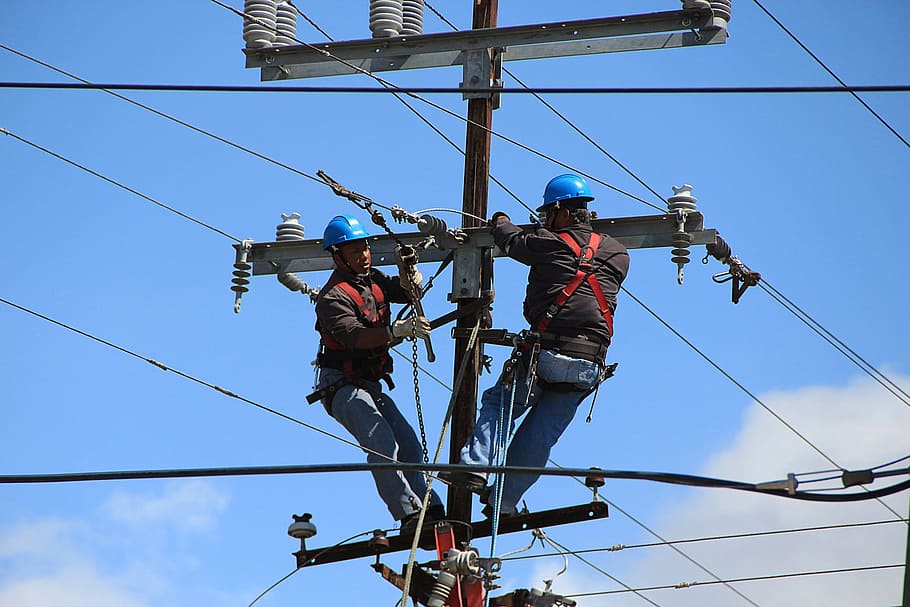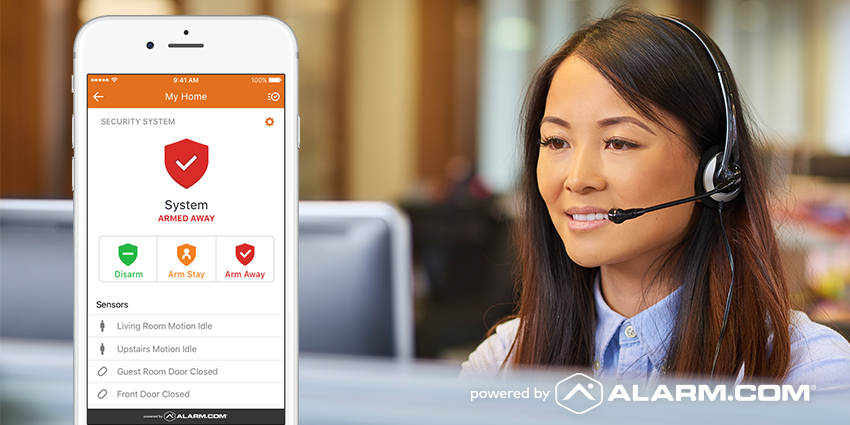When we design a security system with our customers, we also determine how to best monitor their alarm. Of course, part of this discussion also involves seeing how different monitoring services will impact customers’ monthly monitoring fees. A simple Google search of average alarm monitoring costs show huge ranges of potential prices. In this post, we hope to explain the many factors that affect the cost of alarm monitoring. We will begin by focusing on specific monitoring services that we offer. The wide array of monitoring services available often surprises customers. With this in mind, we’ll explain what these options entail.
Furthermore, we will discuss which options fit both the “basic” and “unique” categories. Monitoring an alarm system always involves a monthly fee. Knowing what features you need and what additional features you have available will prove helpful. Finally, we’ll also look at how different business models affect the cost of alarm monitoring. Each security system provider approaches their installation and monitoring pricing differently. Therefore, looking at these different approaches can help explain differences in monitoring costs between different security companies. Now, let’s get started with looking at the different types of monitoring services we offer!

When you monitor your alarm using traditional phone lines, outages in phone service can affect your security.
Different Levels of Alarm Monitoring Services
As we’ve already pointed out, we offer a variety of alarm monitoring options. Generally, overall monitoring costs rise as customers select more options. However, some options can help customers save money overall, even as monitoring costs rise (more on that later). In this section, we will focus on some unique monitoring concepts. First, we will cover traditional, phone-based monitoring. From there, we will discuss cellular monitoring options. Many families’ lack of hard phone lines have made this a very popular means of monitoring. Finally, we will share some of the most unique options that we provide. As a “one-stop shop” security provider, we attempt to provide monitoring that fits a wide variety of security needs. Now, let’s look at the type of monitoring service that most people think of when they think of alarm monitoring.
Phone-Line Based Monitoring
Often called “traditional” monitoring, phone-line based monitoring represents the oldest form of monitoring. This service involves tying existing phone lines into an alarm system. This connection allows the panel to dial out to our central station. For quite awhile, this was the only way to monitor an alarm. In fact, many people still keep their phone lines just to monitor their security systems.
Additionally, we consider this the most “basic” form of security system monitoring. Therefore, the cost of alarm monitoring through just about any security provider is lowest when using this option. Generally, companies use this monitoring price in advertisements as a “starting point” for monitoring costs. Of course, phone-line based monitoring does not work for customers without a phone lines. Furthermore, this type of monitoring also has security limitations that we will discuss in the next section. Now, let’s discuss a more secure form of monitoring that has gotten quite popular over the last few years!
Cellular Monitoring
Cellular monitoring involves installing a cell dialer in an alarm panel. This dialer acts as a dedicated communication path between an alarm and our central station. Because these dialers communicate on a cellular network, the cost of monitoring goes up slightly to cover a very nominal charge from the network provider. However, customers often save money by cancelling their traditional phone service and connecting their alarms to a cell dialer! Cellular monitoring addresses two major issues with phone-line based monitoring. First, as mentioned before, many people do not have land lines on their properties. Cellular monitoring allows these customers to still enjoy the security of a monitored alarm. Furthermore, phone lines often go down due to bad weather or get cut by burglars. Cell dialers keep you monitored under both of these circumstances.

Monitoring your security system through an interactive cellular service such as Alarm.com allows you to both monitor and control your alarm system through a cellular network.
Additionally, some cellular dialers allow for interactive cellular monitoring. In fact, our own cellular dialer, powered by Alarm.com, offers this service. Interactive cellular monitoring services allow users to control their alarm remotely. Using a smartphone, tablet, or any internet-connected device, users can control their alarm system from anywhere in the world. Furthermore, interactive cellular customers receive text alerts from their security system. Events such as alarm activations, system arming and disarming, or low sensor batteries can all send alerts to users’ phones. As you might expect, interactive cellular monitoring comes with hike in monthly monitoring rates. However, the security and convenience it provides makes it quite a popular option. Now, let’s look at a few more “specialty” monitoring options that can affect the cost of alarm monitoring!
Other Monitoring Options That Affect the Cost of Alarm Monitoring
In addition to our main monitoring options, we also offer monitoring services that customers can add on an individual basis. For example, some of our customers like to track who arms and disarms their alarm system, and when. As we explained previously, customers with interactive cellular monitoring already have this ability. However, even customers without interactive cellular monitoring can track alarm use through an offering called “open/close reports.” We provide this service in two levels, “unsupervised” and “supervised.” Unsupervised open/close reports entail a weekly email showing which codes were used to arm and disarm the alarm system, and when. Supervised open/close reports also involve a phone call from our central station if armings and disarmings don’t happen when you expect them. In particular, business owners enjoy this knowledge in case employees show up late to work.
Finally, we also offer 2-way voice monitoring. This feature involves the ability to have a central station dispatcher have a conversation with alarm users through the security system keypad speaker. You may remember our post examining 6 Security Measures That Improve Senior Citizen Safety in the Home. There, we discussed how two-way voice monitoring adds senior citizen security. Many elderly customers take advantage of this offering, which allows them to create a quick ambulance dispatch after activating a medical panic button if necessary. At this point, we’ve looked at several monitoring options than can affect the cost of alarm monitoring. Next, let’s look at how alarm companies’ business models affect their monitoring rates.
How Different Business Models Affect Monitoring Rates
A while back, we created a post including 6 Important Questions to Ask Security System Providers. In that post, we discussed the importance of finding out the “total” cost of an alarm system. By that, we meant that you should always calculate the price of the installation, as well as the cost of monitoring for as many months as you plan on using the alarm. Many companies install alarms for a very low upfront cost. Afterwards, they proceed to charge monitoring rates that often exceed ours by $18-25 per month!

Many alarm companies offer “to good to be true” installation prices while charging high monitoring rates, costing you more money in the long run.
Larger companies often use this business model as a way to roll the equipment cost into your monitoring bills. After a few years, customers end up paying far more than if they had paid more up front and less for their monitoring bill. While customers pay more for our equipment up front, they save in the long term by paying lower monitoring rates. Our business model allows customers to pay hundreds of dollars less every year in comparison with the larger companies in the security industry. At some point, you will likely see an ad for an alarm that seems too good to be true. Make sure you read the ad’s fine print and see if you can find monitoring rate information. Often, a company’s business model will affect the cost of alarm monitoring in a way that makes going with a company with lower monitoring rates a better option!
Putting it All Together
We hope that this post has given you some idea of why the cost of alarm monitoring differs so much from customer to customer. Of course, customers with different alarm companies could pay different rates for very similar services. Furthermore, our customers’ rates vary greatly based on their unique monitoring service options. If you have any questions about the material in this post, we encourage you to contact us. We will happily answer any questions you may have about our alarm monitoring services. Furthermore, we can stop by and put together an alarm system and monitoring package that fits your security needs. Creating a security plan that does what you need to and fits your monitoring budget will help keep you, your family, and your most valuable possessions as safe as possible!
